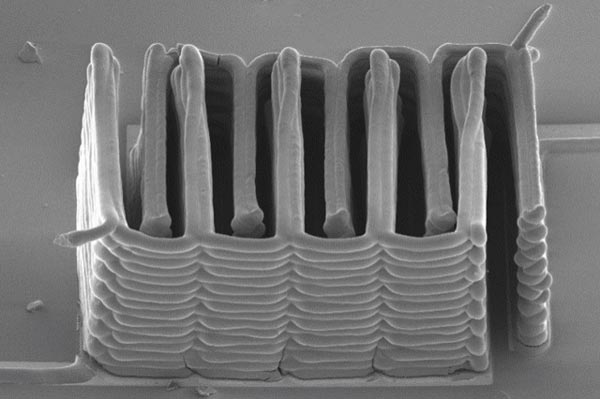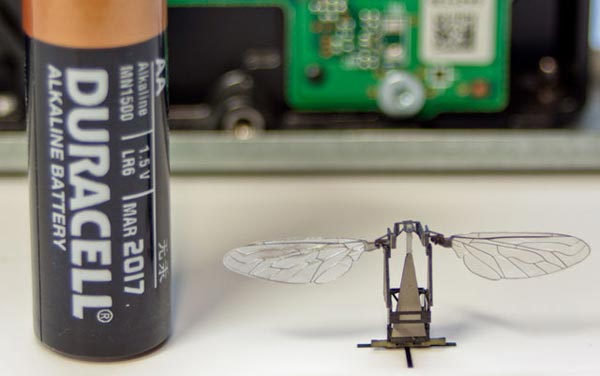Scientists at Harvard University and the University of Illinois are the first to fabricate a battery using a 3D printer. The team focussed upon using the ability of the 3D printer to create an exceedingly small “microbattery”, variously described as “thinner than a human hair”, “as tiny as a grain of sand” and more precisely, “less than a millimetre wide” in an article on GigaOM.

How the microbattery is constructed
A custom 3D printer was used in the process with a printing nozzle size of 30 microns. Two comb like shapes were printed and laid down in an interlocking pattern to function as the two electrodes. The finished battery, less than a millimetre wide, was placed in an electrolyte solution for testing.
This 3D printed battery is a lithium-ion type cell and is reportedly “dense and thick enough to compete with a traditional battery” unlike previous film-based small/thin battery examples. A researcher wrote in the Harvard press release that “The electrochemical performance is comparable to commercial batteries in terms of charge and discharge rate, cycle life and energy densities. We’re just able to achieve this on a much smaller scale”.
What will it be used for? Robobees of course...
One of the research paper authors suggested the new microbattery may be used in Robobees, autonomous drone robot insects, which is another Harvard project. Apparently the comparatively bulky power options currently available are hobbling the development of these devices.

Wearable tech could be another avenue where microbatteries could be used. Device miniaturisation will of course benefit from power source miniaturisation, especially if it can provide comparably large amounts of juice from its smaller size.
Similar to wearable tech, one of the researchers suggested a use of the 3D printed microbattery in medical tech. The GigaOM report says that currently “hearing aids are 98 per cent 3D-printed and electronic components must be added later”, a microbattery researcher mused “Why not print the whole hearing aid?”













